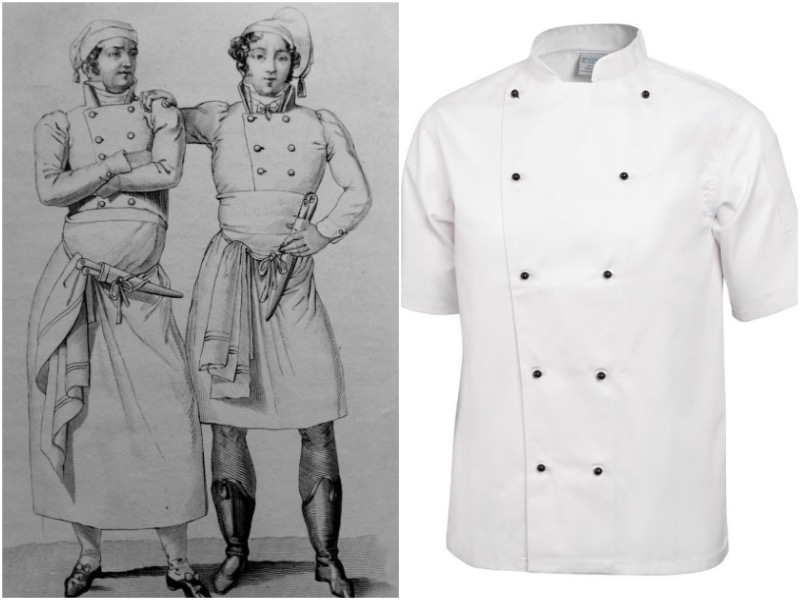Want to read in Dutch? Click here
If you dine at a formal restaurant, you’ll immediately recognize the chef. A traditional chef typically wears a chef’s jacket. But since when have these white jackets been worn, and why are they called by this name? In this article, I’ll tell you everything about the history of the chef’s jacket, including trends and interesting facts.

The history of the chef’s jacket
The founder of the modern chef’s jacket is Antoine-Marie Carême (1784-1833). This Frenchman was also the first chef and pâtissier to have an international career. Among his admirers were Tsar Alexander I, King George IV of England, and Emperor Franz I of Austria. He was known for his impressive cakes that resembled ancient temples.
In his book Le Maître d’hôtel français (1822), he demonstrated how a professional chef should dress. With this, he became the first in history to create a dress code for this profession. The sketches in his book laid the foundation for the chef’s jacket and the chef’s hat as we know them today. The double row of buttons on the white jacket is particularly characteristic of the chef’s jacket.

Unfortunately, Carême, who died in 1833 at the age of 48, never knew how much impact his ideas on chef’s clothing would have. Due to technological developments, the mass production of textiles only began around 1870. From that moment on, the chef’s jacket became a great success.
Modern chef’s jackets
As protection against the heat, the chef’s jacket was originally made from a double layer of cotton. This double layer was also seen as a “double jacket,” which is how the term “chef’s jacket” originated.
Although modern chef’s jackets still strongly resemble Carême’s original sketches, some changes have occurred over time. For example, the fabric at the front of the jacket used to be secured with a double row of buttons. This way, the fabric could easily be reversed when it became dirty, making the chef look much tidier. These buttons were not only functional but also symbolized the chef’s status. The more buttons one had, the higher the status.
Chefs and buttons
With the advent of the washing machine, it has become much easier to clean work clothes. Therefore, it’s no longer necessary to reverse the fabric on the chef’s jacket. Although the status of chefs in modern times is mainly indicated by awards and the number of social media followers, the button remains a symbol in some places. For example, in traditional restaurants, trainee chefs are only allowed to wear white buttons. Only after completing their training can they add black buttons to their chef’s jacket. When chefs specialize in cold dishes, they wear blue buttons. Green buttons are worn when preparing side dishes and soups, while sauce makers wear red ones.
However, you can’t rely entirely on this nowadays. Some chefs choose a particular button color to showcase their personal taste. In that case, it can be seen as a way to personalize work clothing. And this doesn’t just apply to the buttons. Nowadays, you can also buy chef’s jackets with snap buttons or even a zipper instead of a traditional row of buttons. Special ventilating fabrics and practical details like pockets and loops to hold up the sleeves are also increasingly being used.
In conclusion, the chef’s jacket is still popular, but there are now plenty of variations to give it your own twist.
Best regards,
Aileen
